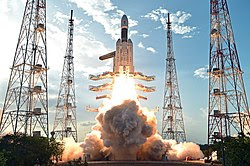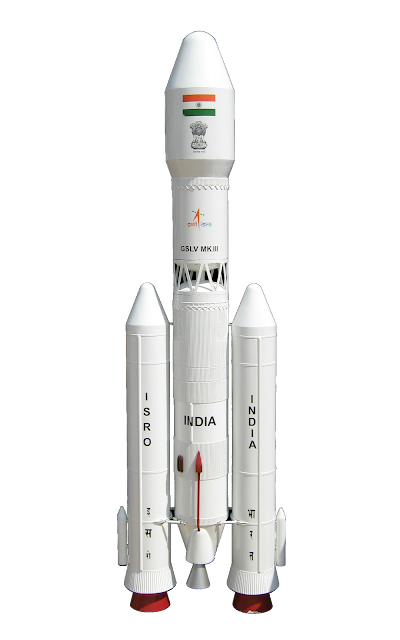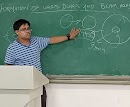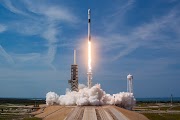Space Exploration
GSLV MK-III...ISRO's Strongest launch vehicle!!! Launch vehicle for INDIAN HUMAN SPACE PROGRAM!!!
GSLV MK-III refers
to Geosynchronous Satellite launch vehicle Mark-III. It is the most powerful
rocket of ISRO (Indian space research origination). It is a three-stage medium-lift launch vehicle developed by the Indian Space Research Organisation (ISRO). Primarily designed to launch
communication satellites into geostationary
orbit, it
is also identified as launch vehicle for crewed missions under the Indian
Human Spaceflight Programme.
Design and mechanism
of the vehicle:-
The vehicle consists of 3 stages:
The first stage consists of two
S200 solid motors, also known as Large Solid Boosters (LSB) attached to the
core stage. Each booster is 3.2 metres (10 ft) wide, 25 metres
(82 ft) long, and carries 207 metric tons (456,000 lb) tonnes of propellant.
The S200 booster uses an HTPB based
propellant. It is the largest solid-fuel booster after the Space Shuttle SRBs and Ariane 5 SRBs.
The second stage, designated L110, is a
liquid-fueled stage that is 21 metres (69 ft) tall and 4 metres
(13 ft) wide, and contains 110 metric tons (240,000 lb)
of unsymmetrical dimethylhydrazine (UDMH) and nitrogen
tetroxide (N2O4). It is powered by two Vikas 2 engines, each
generating 766 kilonewtons (172,000 lbf) thrust, giving a total
thrust of 1,532 kilonewtons (344,000 lbf). The L110 is the
first Indian clustered liquid-fueled engine. The Vikas engines
uses regenerative cooling, providing improved weight and specific
impulse compared to earlier Indian rockets.Each Vikas engine can be
individually gimbaled to control vehicle pitch, yaw and roll control. The L110
core stage ignites 114 seconds after liftoff and burns for 203 seconds.
The
third stage is the cryogenic upper stage, designated C25, is 4 metres
(13 ft) in diameter and 13.5 metres (44 ft) long, and contains 28
metric tons (62,000 lb) of propellant. It is powered by
the CE-20 engine, producing 200 kN (45,000 lbf)
of thrust. CE-20 is the first cryogenic engine developed by India which uses
a gas generator.
 |
| GSLV MK-III D1 lift off |
This
launch vehicle has been developed to increase the payload carrying capacity of
ISRO, which is very necessary for the missions like Chandrayaan-2(launch date is 15th July, 2019) and Indian Human Space program. Till now,
GSLV MK-III has been launched 3 times and it is successful in all of its
attempts. After several delays and a
sub-orbital test flight on 18 December 2014, ISRO successfully conducted the
first orbital test launch of GSLV-III on 5 June 2017 from the Satish Dhawan Space Centre, Andhra Pradesh. GSLV
MK-III has a very important role in Indian space program in future and I hope
ISRO will get successes in their attempts.
Thanks for reading.....
Don't forget to check out my other articles and subscribe to this blog!!!
Join me on my social media handles and ask your doubts about the subject freely!!!
You can directly talk with me on Instagram
To meet more physics Enthusiasts please join our Facebook Page
To meet more physics Enthusiasts please join our Facebook Page
Also for latest updates of my posts join me on Twitter
See you next time!!!
-Ratnadeep Das Choudhury
Founder and Writer of The Dynamic Frequency
Founder and Writer of The Dynamic Frequency













0 Comments